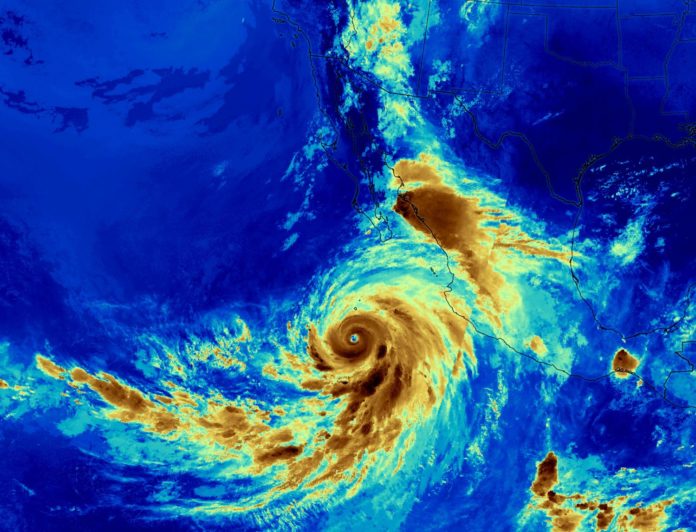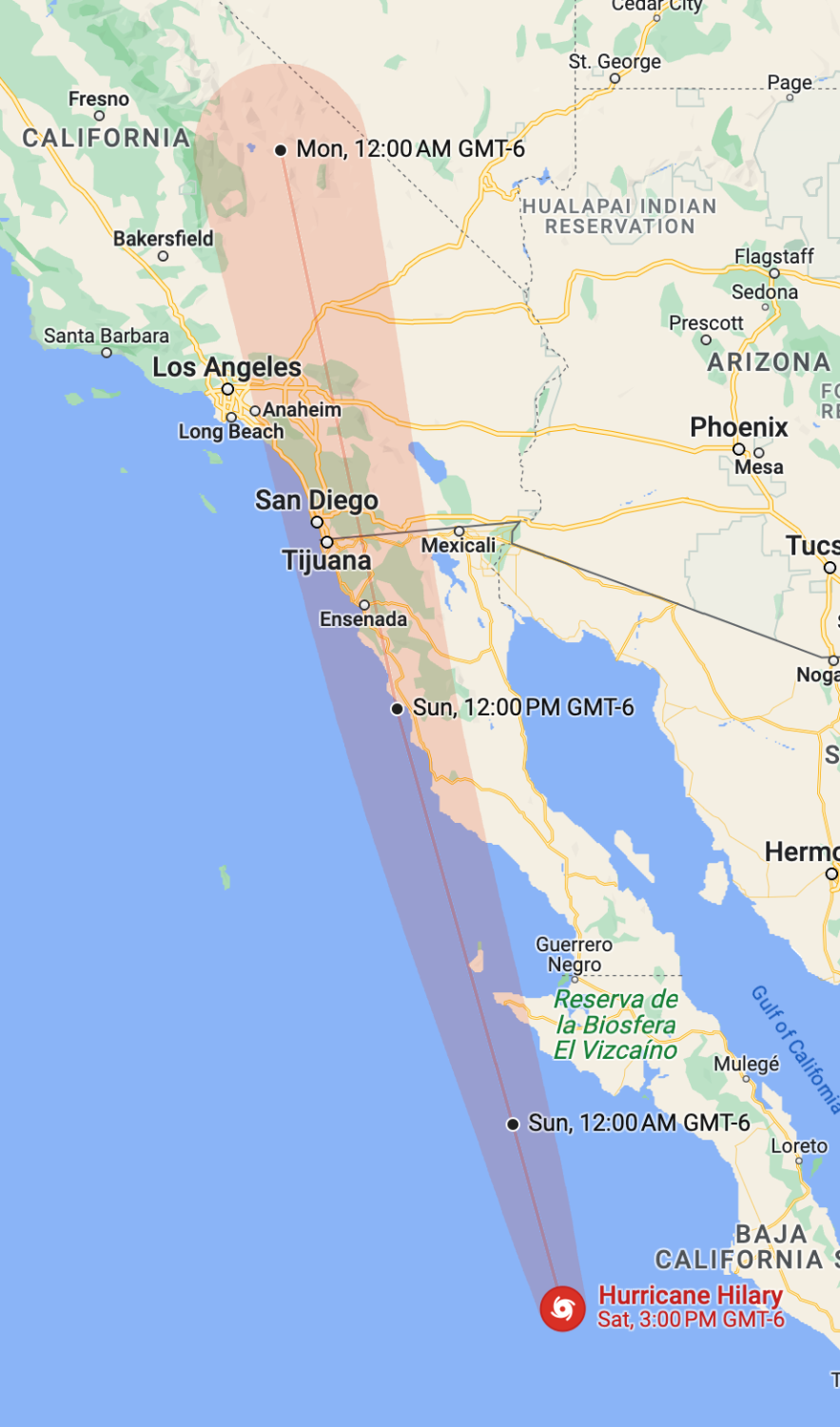
Hurricane Hilary, currently a powerful Category 4 storm, is expected to make landfall in Southern California over the weekend and into early next week, bringing with it the potential for moderate to heavy showers, thunderstorms, and strong winds. As the state braces for what is forecasted to be the wettest tropical cyclone in California history,
Governor Gavin Newsom is urging residents in the storm’s path to take precautions now ahead of the storm.
“California has thousands of people on the ground working hand-in-hand with federal and local personnel to support communities in Hurricane Hilary’s path with resources, equipment and expertise. We’re mobilizing all of government as we prepare and respond to this unprecedented storm”, the governor said.
The first-ever Tropical Storm Watch has been issued for California as the storm is expected to bring a year’s worth of rain to some parts of Southern California.
 Residents in South Pasadena, San Marino, Pasadena, and Highland Park are encouraged to prepare for variable precipitation and wind intensity as the hurricane approaches the region.
Residents in South Pasadena, San Marino, Pasadena, and Highland Park are encouraged to prepare for variable precipitation and wind intensity as the hurricane approaches the region.
“We should never underestimate the power of Mother Nature,” said Governor Newsom. “California is coordinating with federal and local governments to support communities as they prepare for this unprecedented storm. Heed warnings from local authorities, be ready, and stay informed.”
Governor Newsom is headed to Southern California to be present during the storm’s landfall. The State Operations Center at the Governor’s Office of Emergency Services (Cal OES) has been activated and is currently coordinating across state agencies to monitor incoming impacts from rain, wind, potential flash flooding, and power outages.
In coordination with local authorities, the state is prepositioning resources, including swift water rescue teams, California National Guard teams, and flood fighting tools. Efforts are also underway to work with community-based organizations to protect vulnerable unhoused individuals. Additionally, California is staffing highway maintenance crews around the clock to ensure roadway safety during the storm.
Here are the top five things residents can do to stay safe during Hurricane Hilary:
1. Stay Connected: Dial 3-1-1 for help or information, and call 911 in case of a critical emergency. Stay informed by signing up for emergency alerts, including warnings and evacuation notices, at CalAlerts.org. Check in with loved ones and neighbors.
2. Prepare for High Winds and Ocean Surges: Remove dead trees, overhanging branches, and loose roofing material. Secure unsecured objects from patios and balconies. During a high wind event, take cover next to a building or under shelter, and stay away from windows and elevated areas.
3. Avoid the Ocean: The National Weather Service has issued a high surf advisory and is urging beachgoers to stay out of the water as Hurricane Hilary will create strong breaking waves, shore breaks, and strong longshore and rip currents.
4. Travel Safely: Avoid non-essential travel during the peak of the storm expected Sunday and Monday. If driving is necessary, download the QuickMap app or visit QuickMap (ca.gov) for up-to-date information on road conditions. Avoid walking, swimming, or driving through flood waters.
5. Prepare for Power Outages: Take inventory of items that rely on electricity, keep devices charged, and plan for alternative power sources, such as a portable charger or power bank. Have flashlights for every household member and plan for potential water outages.
Residents are reminded to always follow the guidance of local authorities, including evacuation orders, road closures, and other official notices.















.png)









